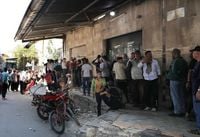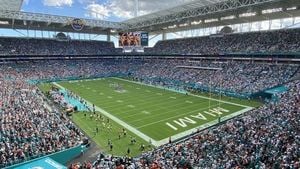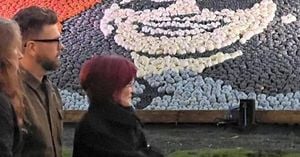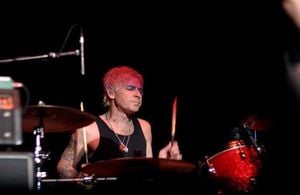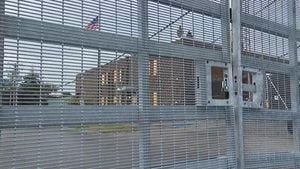The summer of 2025 marked a turning point in the already fractured landscape of post-civil war Syria. Sectarian violence in the southern province of Sweida, home to the country's Druze minority, has not only hardened local opposition to Damascus but also ignited calls for secession, drawing in regional powers and threatening to unravel Syria’s fragile unity. According to the Associated Press, government forces entered Sweida in a bid to reassert control over the Druze enclave, which had operated with a degree of semiautonomy for years. Instead of restoring order, the intervention backfired spectacularly.
What followed was a wave of sectarian attacks on Druze civilians. Hundreds were killed in the July clashes—many at the hands of government fighters, as documented by videos showing armed men executing Druze civilians in public squares and humiliating elders. The U.N. Office of the High Commissioner on Human Rights reported in late August that over 1,000 people had been killed, including at least 539 identified Druze civilians, with accounts of rape, looting, and extrajudicial executions. At least 33 villages were burned to the ground, and the violence has not fully subsided.
For the Druze, who make up just 3% of Syria’s population but have long played a pivotal role in the country’s history, these events were a breaking point. Omar Alkontar, a 21-year-old biology student whose village outside Sweida was destroyed, captured the prevailing mood: “The main idea is that we have to separate (from Damascus) to prevent another massacre.” His words, reported by the Associated Press, echo a growing sentiment among the Druze that autonomy—or even outright independence—may be the only way to ensure their survival.
In the wake of the violence, Druze groups established a de facto military and governmental authority in Sweida, mirroring the Kurdish-led administration in Syria’s northeast. This new structure, led by the influential spiritual leader Sheikh Hikmat al-Hijri, has united dozens of armed factions—including former Assad loyalists and the Men of Dignity, a group previously open to cooperation with Damascus—under the banner of the National Guard. In August, al-Hijri formed the Supreme Legal Council, a government-like body meant to provide local governance and protection.
Al-Hijri has been explicit about his ambitions. “We urge all the honorable in the world … to stand with the Druze sect in southern Syria to declare a separate region that keeps us protected until the end of time,” he declared in August, as reported by the Associated Press. The vision for Sweida’s future remains contested—while many Druze favor autonomy within a federal Syria, a vocal minority is pushing for complete partition.
The July bloodshed also shifted the attitudes of other minority groups and raised alarm bells across the region. Mazen Ezzi, a Syrian researcher from Sweida now based in Paris, told the Associated Press that the attacks “sounded strong alarm bells among the Druze as well as other minority groups.” The realization, he said, was that remaining part of the new political status quo under interim President Ahmad al-Sharaa would be “extremely difficult.”
President al-Sharaa, who came to power after the Islamist-led insurgents toppled Bashar al-Assad in December 2024, initially promised a democratic and inclusive transition. Many Druze celebrated Assad’s ouster and were willing to give the new government a chance. But the events of the summer soured those hopes. Al-Sharaa has since acknowledged the gravity of the situation, warning that Israel is seeking to exploit the tensions and forming a fact-finding mission to investigate the violence. “Mistakes were made by all sides: the Druze community, the Bedouins, even the state itself,” he said in a televised interview. “Everyone who committed wrongdoing, made mistakes, or violated people’s rights must be held accountable.”
Despite these gestures, trust in Damascus has eroded. In September, Syria, the United States, and Jordan announced a road map to return displaced Druze and Bedouins, deliver aid to Sweida, and foster reconciliation. Yet, as reported by the Associated Press, these efforts have been widely dismissed in Sweida as too little, too late. One resident, whose fiancé and family members were killed in the attacks, accused Damascus of “covering the attacks up” and described al-Sharaa as a “murderous extremist.”
Meanwhile, the crisis in Sweida has drawn in Israel, which has a significant Druze population in its own territory and the annexed Golan Heights. When violence erupted in July, Israel’s Druze spiritual leader, Sheikh Mowafak Tarif, called for Israeli military intervention to protect the Syrian Druze. Israel responded with airstrikes on Syrian government forces and the Defense Ministry in Damascus, prompting Syrian troops to withdraw from Sweida. Tarif has since coordinated aid deliveries to the besieged province and called for a demilitarized southern Syria and a humanitarian corridor from Israel to Sweida. Portraits of al-Hijri and Tarif now appear side by side at protests in Karama Square, Sweida, where Druze and Israeli flags are sometimes flown together—a striking symbol of shifting allegiances.
Yet, not everyone is comfortable with this new reality. Alkontar, the biology student, voiced a sentiment widely felt: “It’s not necessarily a love for Israel. They felt safer after the strikes, which is very sad. You want the army of your own government to provide you with that security, not a foreign country.”
Beyond Sweida, other regions of Syria are also straining at the seams. The Kurdish-led Syrian Democratic Forces (SDF), which control about 30% of northeastern Syria, have been locked in tense negotiations with Damascus over their future. A March 2025 deal to integrate the SDF into the national government and armed forces faces a December deadline, but talks are faltering. If no agreement is reached, military confrontation looms—not just with Damascus, but potentially with Turkey, which views the SDF as a terrorist threat due to its ties with the Kurdistan Workers’ Party. Turkish President Recep Tayyip Erdoğan warned at the United Nations that Turkey “will not allow a déjà vu to take place in Syria.”
For Turkey, as Dr. Mehmet Çelik of the Daily Sabah told the Washington Examiner, “the establishment of an autonomous entity along Türkiye’s southern border poses a threat to Türkiye’s security.” Ankara fears that any fragmentation in Syria could trigger cascading instability across the region, fueling further ethnic and sectarian strife.
As 2025 draws to a close, Syria’s post-Assad future remains deeply uncertain. The Druze of Sweida, battered by violence and betrayal, are forging their own path—one that could redraw the map of Syria and reshape the balance of power in the Middle East. Whether their bid for autonomy will inspire other minorities or plunge the region into deeper chaos is a question that hangs over the country like a storm cloud, with no easy answers in sight.
